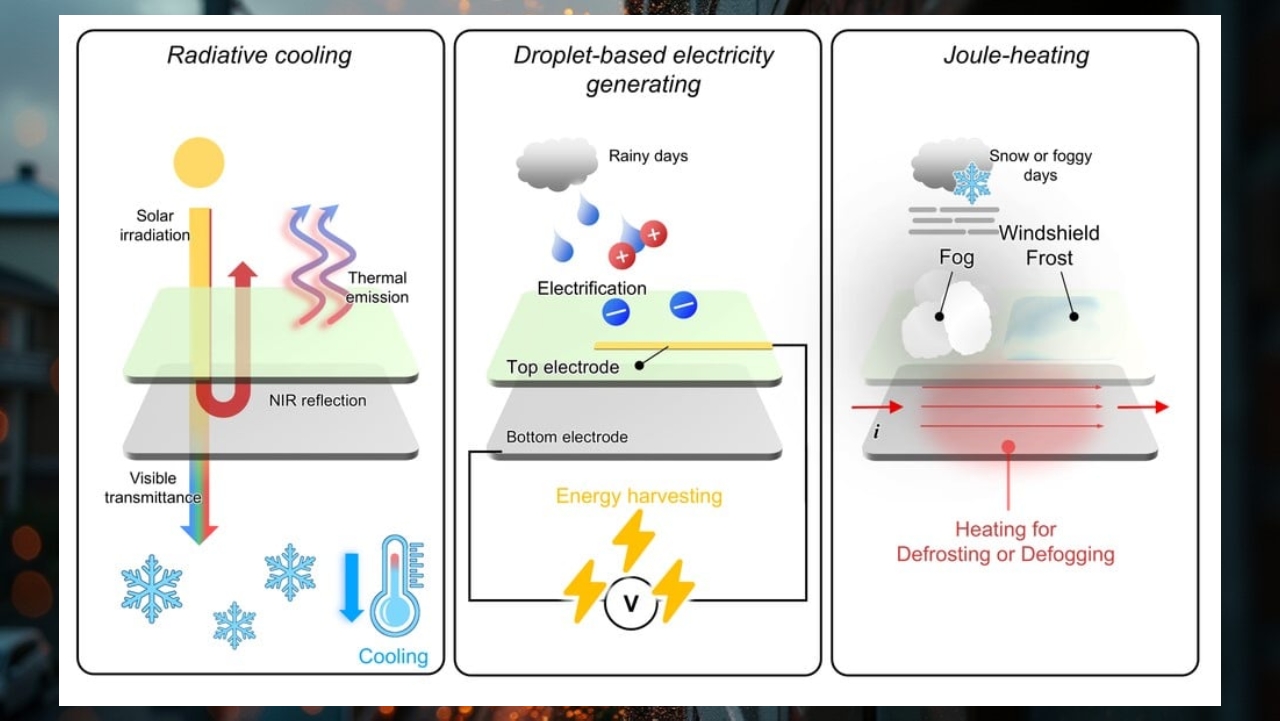A group of researchers from the University of Seoul has developed a revolutionary smart window that will allow us to produce energy while keeping our homes cool. Windows, which look ordinary from the outside, will convert the kinetic energy of raindrops into electricity, bringing us one step closer to sustainable living. So how exactly do these windows work and why are they so important?
Smart window that generates electricity from raindrops and cools the house in summer has been developed
Builders know well that in traditional homes, windows are often seen as energy wasters. However, this new generation smart window developed by the Department of Mechanical Engineering at Seoul University enables windows to go beyond being just a means of letting in light, and to perform important functions such as energy production and temperature control .

This smart window not only converts the kinetic energy generated by raindrops hitting the surface into electricity, but also uses radiative cooling technology to lower the temperature of rooms. Professor Seung Hwan Ko, who led the research, said that this technology has great potential in terms of energy efficiency and environmental protection.
This smart window not only converts the kinetic energy generated by raindrops hitting the surface into electricity, but also uses
radiative cooling technology to lower the temperature of rooms. Professor Seung Hwan Ko, who led the research, said that this technology has great potential in terms of energy efficiency and environmental protection.

The team has based their development of smart windows on two basic principles, which they call Zero Energy and Plus Energy. Zero Energy allows the window to perform certain functions without consuming energy, while Plus Energy enables the window to generate electricity. In fact, these two principles could enable homes to achieve energy independence in the future.

Laboratory tests have shown that smart windows can reduce indoor temperatures by up to 7 degrees Celsius compared to standard glass. During rain, they can produce 8.3 watts of energy per square meter . In addition, thanks to the special coating on the windows, it is also possible to quickly melt ice that forms on the glass in winter .

These smart windows are expected to be widely used, especially in areas such as energy-saving buildings and electric vehicles. This technology, which is said to reduce environmental pollution and eliminate dependence on fossil fuels, could be an important step for sustainable living spaces of the future.













